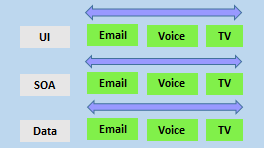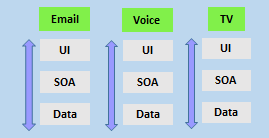Define organization structure for agile practices
For most organizations, reorganizing to be agile is difficult. It requires a mind-shift and a culture-shift that challenges many existing policies and processes within the organization.
Good governance in organizations, particularly in large organizations, often leads to many relatively rigid rules, operating structures, and methods. It also tends to avoid a broad delegation of authority.
While most large organizations haven't moved to an agile structure, most are now experimenting with doing so.
Their business environments are volatile and complex, and they have seen the limitations of their current systems, mainly an inability to cope with change quickly.
They realize that it's common today for long-term established businesses and their industries to be disrupted by startups.
Horizontal vs. vertical teams
Traditionally, horizontal team structures divide teams according to the software architecture. In this example, the teams have been divided into the user interface, service-oriented architecture, and data teams:

By comparison, vertical team structures span the architecture and are aligned with skillsets or disciplines:

Vertical teams have been shown to provide more good outcomes in Agile projects. Each product must have an identified owner.
Another key benefit of the vertical team structure is that scaling can occur by adding teams. In this example, feature teams have been created rather than just project teams:
